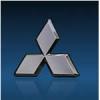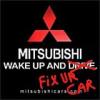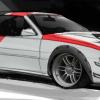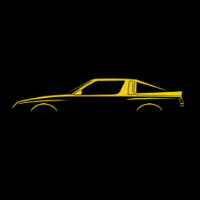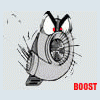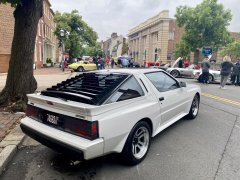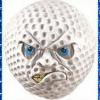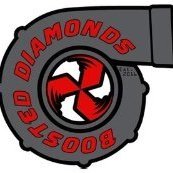Leaderboard
Popular Content
Showing content with the highest reputation since 07/06/24 in all areas
-
Happy new year my friends, To thank all our loyal customers for another great year there will be free shipping on orders over $100.00 of Starquestparts. This goes for the entire site from bearings to cylinder heads. This runs from Jan 1- 2025 to Jan 15th- 2025 so get your list ready!. http://www.dadsengineparts.com Thank you! Dad5 points
-
Great fitting Silicone vacuum lines, fits 4.0 and 4.5mm ports on Conquest and Starion, nice snug fit. $1.25 a foot. http://www.dadsengineparts.com4 points
-
Hello all...It's been a long time since I've been here. I apologize for my absence, but life took a turn and I had to focus on other things. I've had several texts, calls, and emails over the years. It's been great to hear from some of you. We just bought our first house, and while going through boxes and such, came upon one of the calendars I did for the club. A lot of good memories came rushing back, so decided to log on and see what's what. I hope the SQ community is still going strong. Give a shout and say hi. Cheers, Nick4 points
-
I have had rear differential gaskets reproduced for the Starquests, I also stock the axle seals and front pinion seals. You can get them at my site http://www.dadsengineparts.com Well I tried uploading a picture 48kb in size and get a message I can only upload file no more than 53.7 kb ?????4 points
-
The Diagram file:///C:\Users\Jimmy\AppData\Local\Temp\msohtmlclip1\01\clip_image001.jpg The list of ports (22 in all) 1. Vacuum Retard Diaphram (directly on top of the distributor) 2. Top Port on the TB, right where the OVCP meets the TB 3. Secondary Air Cleaner Assembly (black box on the drivers side of the VC) 4. Thermo Valve (2 ports) 5. EGR (3 ports) 6. SACA Solenoids (5 ports) 7. Main Vacuum source (3 ports) 8. Bottom port, this feeds the vac storage, cruise, and runs to the vac pump in front 9. Vacuum Storage (not pictured), mounted to the side of the shock tower 10. Cruise Control (not pictured), mounted to the front of the shock tower 11. Vacuum pump (not pictured), mounted right beside the drivers headlight 12. Purge Control Valve (2 ports), directly under the aircan Now, depending on what you're wanting to do with your car, your position on the environment, and whether or not you need a smog test to get a state inspection, it's possible to remove some of the vacuum lines and clean up the engine bay a LOT. For a pure race car you'd probably just need 1 stock line (slightly relocated), that'd be a line running from the top of the TB (labeled #2), to the Vacuum Retard Diaphram (labeled #1), this is the only line that is an absolute necessity. However, if you want, for example, your inside head & foot vents to work properly, you'll need to keep the line running from the bottom of the TB (labeled #8 ) going to the Vacuum Storage canister (labeled #9) (+ the single, small vacuum line running from it's nearest "T" into the firewall [not pictured or labeled]). Since this comes up frequently I'll address it here, the vac port you use for a BOV is labeled Main Vacuum Source (#7), you'll use the one closest to the firewall if you're looking at it from the drivers side fender. If you need a smog test to pass a state inspection you'll probably need to keep everything, each vacuum assisted item has its place. If you've removed the catalytic converters you won't be needing the Secondary Air Cleaner Assembly (labeled #3), it supplies fresh air to the catalysts.4 points
-
They are set up for production. Modeled in CAD with CNC machined fixtures and all parts are CNC machined for perfect repeatable fitment.4 points
-
Lot of stuff has been added to the site https://www.enginemachineservice.com/ems/index.php4 points
-
Some time ago I was trying to grab the VSS Signal from the read switch to input into my ECU. Someone else was also trying to do the same. I think that post was lost during the great outage. Anyways... after many electronics projects and owning a volt meter (and properly know how to read circuit diagrams) I finally figured it out. The VSS Signal comes from a reed switch. That reed switch only switches a ground signal. You can grab the signal from one of the connectors, but I wanted to do non-destructive. I grabbed a ring terminal and attached it under the screw directly to the right of the speedometer. You want to use the lower of the two screws. I'm going to call it VSS-Out This is a floating ground. So to use the signal, you need to add a pull up to 12v (for most applications, 5v for others). This gives you a high signal (+12v or +5v) as the normal state and a low signal (ground) when the switch activates. There are 4 pulses per revolution, resulting in a square wave (⎍⎍⎍) . This should work for just about any ECU unless the ecu is expecting an AC Sine wave or VR Signal. You will need to attach a diode inline from VSS-Out if you are expecting the intermittent wipers to still work, abs, or the cruise control. The line on the diode should point towards the cluster. Attach a wire to the opposite side of the diode with a 10k resistor and connect the other leg of the resistor to 12v. Then from the side of the resistor opposite 12v you can attach the wire to the ECU. I attached a basic diagram3 points
-
In my case, 2 years living in Ohio. I used to live in Omaha back in my early years, so I am no stranger to what kind of havoc exposure to salted roads can do to a car, but up until now never had a timeline. when I bought the current CQ, the fact that it had lived the majority of its life in Arizona made me overlook the first 2 years it spent in hell. ( read that: Ohio) This is what’s left of the left rear quarter apron. This is the rough cut after removing the lower skirt on the driver’s side.. Annnndd..this is what had become of the wheel well lip, all of which was filled full of body putty in an attempt to hide this mess. Ordinarily, this woulda/shoulda been on the passenger side of the car, due to its constant exposure of curb slush, but the passenger side of the car was “normal”. The tale of the tape best I can see/tell was that the car sustained a small amount of front quarter panel damage that caused a separation of the inner wheel tub from the outer quarter panel, and dude drove it through a couple of winters in Ohio that way. And give Ohio, Nebraska, Michigan, Indiana, or any other rust belt state two whole years to leave crud somewhere where a pressure washer will never get to it… Sweet home Alabama. fortunately for me is that I have modest metal fab skills, I feel confident that I can fix this….repair pics to follow.3 points
-
Good evening fellow enthusiasts, It was suggest ( i think it was Jimmy) that I should post and reintroduce myself to the group since so many things have changed here. I'm pretty sure there are some that know me but there may be others that don't. I got involved in the Starquest scene by My son ( screen name Kreal) in 2004, he had bought a Quest and had some issues with it and introduced me to the forums so I can help fix it using his account. I would use his account and just sign Dad when I posted anything. I had Started an Engine rebuild/ Machine shop in 1989 Doing work on mainly industrial and Truck engines ( cat, Cummins, Intl etc) There is more $$ in the diesel, although we did work on basically anything going down the road, Just the engines we didn't work on the equipment. So getting back to the forums, I would see at times questions or posts on head rebuilding or block boring- you know basic machine work, so I would chime in and help answer questions, Well you know how young kids on forums can be difficult, well my son misbehaved and got a suspension for I don't know maybe 10 days or something and they said Hey, you can't share accounts. Well Ok, I will make my own and was thinking of a screen name, well everyone knew me at the time as "Dad" so that became my screen name. As I got more into the forums and people found out I had a shop they asked if I could get parts? Sure, that's my business so we started to handle parts for these cars, My son totaled his in 2004 and had to part it to recoup some $$ and found a market for used parts, Dragging wrecked and rusted Quests to my shop. That is how I got my white Quest that I rebuilt and painted in 2007. My other son Bill took an interest and decided he wanted to restore one, He went full bore and I think his story might still be on the boards His name was Coldscrip. Anyway we supplied parts, And I even rebuilt engines for these from Florida to Maine and west to Missouri Our parts business was a good hobby- to be honest I made more selling a caterpillar overhaul kit than a quest kit, But meeting the Quest people was way more fun, As time went on we met more people mainly at Pidgeon forge meets, Our collection of running quests grew to 6 in the family, Sadly in 2020 my building I had leased got put up for sale- forcing me to relocate after 31 years in business, At 62 I said, nope not during this Covid mess, I'm not doing it, I quickly sold off the equipment and closed the doors, I needed room so sold My 87 Shetland and My 83 Starion. I did keep My first Quest the white 87. I took a few months off, added on my garage, took a parts job at a Navistar dealer then at a Chevrolet dealer. We kept in touch with our Quest friends and many kept asking if we would sell parts again ( We, meaning the Wife and I who was a big help in my business), So Her and I decided to start offering parts again and In January of 2023 we opened Dads Engine Parts LLC. I just recently retired but may find something part time to keep me busy. So here is my intro to the folks that may not know who we are. After 31 years in Machine shop business I made a lot of connections with suppliers and reconnected with many of them, Wiseco still make My custom forged pistons that I got licensing from Midwest turbo when they closed. My Oem Mitsubishi connections, although I know get more direct from Japan and of course my aftermarket suppliers. We still have 3 Quests in the family, I pretty much Use what I sell, just recently installed a fuel tank in My son's quest, Sourced out the fuel pump, Fuel feed lines, Filler tube hoses, Fuel drain plug ( took a few tries to find ones that seal well) so after documenting what I used I am able to offer those to the community saving tons of trial and error searching for what you need- That's what I'm about. We have been expanding our line as we go ( we are still trying to make room for parts) Unfortunately I no longer offer any type of machine work. So that in a nutshell is what Dads Engine parts ( Formerly Engine Machine service) is all about, I stick with what works like the same brand of timing kits and cylinder heads I was using 15 years ago as long as they aren't discontinued Been on this forum for 20 years now so if you need parts or some advice especially in the Engine part feel free to contact me. check out my site www.dadsengineparts.com Not sure if the mods need to move this I wasn't sure exactly where to put it so I put it here. Have a great day Dad ( Randy)3 points
-
I keep obsessing over nit-picky little details, but aside from some fuel lines, this thing is just about ready to get put in place. The PCV is overly complicated. Whether or not it’ll actually make a difference, there are two separate systems,…. One for boost, and one for vacuum. When the engine is in boost, a 12v valve will open and let any excess crankcase blow by out through a -10 at the back of the valve cover that is routed to the big puke tank up front. During normal operation, the 12v valve is closed and a second pcv valve will allow air to move through the crankcase into the intake plenum after it get passed through an oil separator mounted on the opposite side. It sounds logical to me, we’ll see how it works. Im especially proud of my home made LS coil pack mount that will hang where the P.S. pump used to be. I didn’t want them on the valve cover, and this was the only place to put the things.3 points
-
It's been 2 years since we closed our shop. Many people continued to ask me about parts so Diane and I started Dads Engine Parts LLC we went online today. link below. Dad Dads Engine Parts Llc.3 points
-
For those of us in some of those Facebook groups, I think one of the things we could do is reply to questions with links to threads here that answer said questions, instead of answering them directly in Facebook. This should bring some traffic here, and hopefully some of that traffic will see "hey, there's a ton of other useful info here that's alot easier to sift through than Facebook is". And for image embeds, I created this thread a while back for using Imgur for image and video hosting. Really the hardest part is getting the account setup (which really isn't hard). Once that's done, it's just uploading the picture to Imgur>copying the link>pasting it here; the forum software will automatically embed photos before you even click Post:3 points
-
That response has you rebuilding the bottom end ... cleaning the block and putting in new bearings. If you just had a blown head gasket you could literally just pull the head and leave the block in the car and replace the gasket. Depending on the severity of the situation, of course, but that response is more of a total engine rebuild.2 points
-
2 points
-
I personally don't know anyone who has one, let alone someone who has one for sale. That said, if you do some digging on here there was someone years ago who had posted a link to the audio file. If that file is still around and you have some graphic art skills you might be able to ship the cassette image and recreate it? Heck, I think I'm talking myself into this.2 points
-
Finally purchased the remaining parts needed to install the Motocam MS3 engine management system. Rebuild the rear suspension two years ago. Plans are to have it on the road soon and mechanically sorted by fall. Then to tackle the horrible color change.2 points
-
At the end of last season my OEM rad starting leaking. I took it to a shop to have it looked at, but they wanted crazy money to fix it. So, I'm eventually going to attempt to fix it myself, but for now I needed to get the car back up and running so I can get the car moved and get a different project in there. Anyway, I ordered up the CXRacing Radiator since it's about the only left you can get. I've heard and read on here often about "fitment issues". I wanted to share my experiences and feedback here. Showed up boxed really well. It's a nice quality pc, gives a good impression out of the box. I decided while I had it all apart to clean up the fans. So I took them apart. I cleaned all the bugs and road rash with Simple Green and then scrubbed them down with some 3M pads. Then I pained them white with some plastic adhesion spray paint. Reinstalled them. Still have some Natallica repro stickers left over from my restoration - so I figured it was time to bust these out too. Remounted them in the OEM locations. When I went to mount the fans I ran into some of my first issues. Each fan has 4 mount points, on each fan, only 2 of them matched up, the other 2 needed slight adjustment. Not bad, but just off by about a mm or two. I used a Dremel with a metal grinding bit to enlarge the radiator holes out a bit. After adjusting a few holes I got everything mounted up alright. Then I ran into the next issue. When I test fit it in the car, I had a vary similar issue withe mount tabs from CXRacing. I had to enlarge them just slightly to get the holes to line up there too. In this pic I had to enlarge the right hole a bit. Finally able to get it installed and mounted up. Fitment is definitely tight as others have said. Here's a pic of the distance between the fan blade and the water pump pulley. There's about an 1/8 inch clearance. Here it is from the front. All back together. I did have a little trouble with the OVCP, but after some "persuading", I got things to line up. So, overall, a pretty easy install. Not 100% plug and play. But, if you have any capabilities at all, it shouldn't be bad to overcome any fitment issues you might run into.2 points
-
I ran into this site via a google search on a totally different topic. Has a vast majority of the dealer brochures (perhaps complete for the North American market on the starion variant only....was there ever an 89 starion brochure????). I was surprised on how many of these brochure's I owned already. I also like their color chart, best one I've seen for these cars. Darren's ImportArchive / Japanese Car Brochures and Paint Codes2 points
-
The passing control relay (plugged into B-39 to the left of the glove box behind the dash) is primarily comprised of circuitry to raise the headlights. The reason it looks so complicated is because of the theft alarm circuit that is built into it. The ECU (this is really the ETACS computer under the driver seat, it is sometimes referred to as ECU in the schematics) can activate the headlights to raise and flash when the car decides it is being stolen (there's lots of ways to trigger it). I can break the pinout down if you really want me to, but that's the gist of it. These cars are pretty easy to steal regardless, so there's not much harm done in removing the anti theft headlight flashing feature. If you ctrl-f in the electrical schematics on the phrase "passing control relay", it describes this anti theft feature in great detail. I would certainly not waste $100 on a replacement and wire in a suitable relay with a plug of your choice. It really doesn't matter. Just make sure it's a common part that isn't NLA or discontinued. Any time I have a part like this fail on one of my cars, I find a suitable part that is readily available and install it. I have not had to do this with the passing control relay as I have several spares. When the day comes, it will be cut out.2 points
-
Thanks to @psu_Crash I was able to get a hold of the vector logos that Natallica used to create custom floor mats for a group buy back in the day, so I figured I'd share that here in case someone else needs it, see attached. It's an EPS file, which is a vector format, and includes the "Star Wars" Starion logo, Conquest logo, rear hatch Conquest graphics, a custom Starion version of that, TSi logo, flatty "turbo" logo and more. I hope it can help someone else trying to reproduce these! Conquest & Starion Hatch logos_Mike.eps2 points
-
I pulled the HVAC and replaced all the foam on flapper doors and I'm very glad I did. Everything I touched turned to dust so no way any of it would have sealed, plus condenser was very dirty.2 points
-
I'm starting to think it is an ETACS issue, what your describing is kind of what an immobilizer does. These cars had ETACS issues, especially the 87-model year. Try swapping it out with another one and see if that solves the issue.2 points
-
And now for the rest of the story…… Everyone who has an auto knows that the real problem with the auto shifter is what’s under the floor. Worn out bushings, and no source to factory replace the worn out items, leaves most having to cobble something together to make the shifter functional, until the next time the stuff fails. I ain’t having none of that. My solution is much more permanent although time consuming. using the factory cross-shaft, I fabbed up the mounts to support rod ends to hold the thing in place, and mounted it to the factory location on the transmission. Whatever deflection that takes place as a result of driveline twist should be within the capabilities of the rod end. There is also a female rod end on the shift linkage. Side to side movement is stopped by a simple piece of 1/2” heater hose slid between the two rod ends. If additional flexing happens and the linkage shows any sign of binding or the thing tries to change its own gears, ( other than normal automatic operation), I’ll add two more rid ends on the other linkage that goes to the transmission. But if there’s that much twist that the thing comes out of gear, I’d imagine I got mount issues.2 points
-
Here is a write-up from Mike_C that I saved on headlights: First, check fuse #1 (top/left corner) since it feeds power to the headlight relay. Make sure it's contacts are good too. I think it feeds the dome light and interior lights too so if they work this probably isn't it. Fuse 9 also gets involved so check it as well. The headlight "fuse" is really a fusible link - look for a green link on the end of the fusible link box by the ignition coil. The links are those little loops of wire for those that don't know - they are a special wire and their diameter determines the amp rating - don't replace them with generic wire! Check the contacts on this link and look for any signs of burning/melting in the insulation. Relay A44X controls the headlamps themselves... if you remove the battery and the metal plate between it and the fender you'll see a pile of relays. A44X is the 3rd relay back from the front of the car, on the row of relays closer to the engine. It should be one of the smaller relays. Swap it with the one next to it and see if your headlights come alive while your taillights crap out. Try this: check your "flash to pass" function by pulling the stalk towards you with the headlights off. The pop-ups should raise, the lights should go on for a moment, and a few seconds later the pop-ups should return closed. The flash to pass-pass has its own relay that must be CLOSED for the normal headlights to work; if this relay fails relay A44X won't operate. It's the relay mounted to the firewall by the brake master cylinder. Unplug it and look for a direct short on the relay pins that line up with wiring harness wires blue+white and blue+yellow. A relay is made of two parts: an electromagnet coil that pulls on a "wiper" arm for the switch. When the relay clicks you know the electromagnet is moving the wiper a bit - and that the stuff controlling the relay is working... but is the wiper moving far enough to touch the other contacts? Are the contacts clean and making good connections - if the relay switches high current (like headlight relays do) it's typical for some arcing to happen. This slowly burns the contacts away and/or causes deposits which don't conduct very well. That's why I suggested swapping with a similar relay as an easy test. Trace the wires to the appropriate pins, then unplug the relay and use an ohmmeter to verify zero ohms between the two relay pins. This tests two of the three contacts of the relay wiper part. Before you spend money on the passing relay, try this: unplug the relay. Use a jumper wire to connect the blue+white to the blue+yellow harness wires. This simulates the passing relay in it's normal position. The headlights ought to work now if the passing relay was the bug. Can you feel relay A44X click when the headlights are turned on/off? That's one way to isolate the problem - we can cut the headlight circuit in half depending on your answer. If it clicks, then the headlight switch, passing relay, fuses, etc. are working because the relay is getting its signal. The problem is the fusible link, wiring to the headlamps, or their ground. Look at the ground wire attached to the passenger strut bodywork; the wire should be on the front side of the bodywork (near the airbox). Yes, the ground ought to be screwed to the engine-bay body work that surrounds the suspension upright.2 points
-
2 points
-
IDK how many amps the factory alternator is rated at, but I’m confident that it’s not 140. Having had this Ford alternator sitting around prompted me to make it work on my banger. Actually fairly easy to do, I had to fab a couple of pieces of straight bar, to reinforce the mount, fab up a “ Mike-o-matic” belt tensioner, and drill out some small holes bigger. The alternator is actually mounted upside down, but I don’t think it’ll mind. The tensioner is made out of a piece of 1/2” od/almost 3/8” I’d mild steel tubing. I simply tapped the inside of the tube with 3/8” rh/lh taps, and screwed in some chinee rod ends ( that came in a kit for the remarkably low price of 16.99). I “gutted” two spare idler wheels by pressing out the bearings. What you see is that bearing serving to apply the required pressure to tension the belt. I gotta tell ya, I’m pretty happy with the end result. A keen eye will notice a 36-1 trigger wheel, and the slotted bracket where the crank sensor will mount. I used another gutted idler pulley bearing to give the belt the needed clearance to pass by the mount post. So,…. In closing, if you’re like me and believe that the engineers who originally built these overly electrically complicated cars had the sense to apply the k.i.s.s. Method to their designs, they’d have come to me first, and I’d have told them to use a one wire 140 amp ford alternator mounted upside down.🙃 This step brings me damn close to installing the engine back into the bay. Tomorrow I’ll deal with the down pipe, and get the waste gate tied into the down pipe. Once I get that PITA step out of the way, I’ll hoist that heavy MF transmission up on an angle to drain the fluid, and get it up on a work stand so I can remove the VB so as to add a couple of 1/4” spacers Inca couple of valve passages as per Scott’s recommendation, add the PTC modified converter to the combo, and put that complain in.2 points
-
The info is here, just no pictures to help. I’m at the stage where I’m now putting the front of the engine on. I purchased the bsek from dads, but the instructions are vague w/regard to how to properly install the entire kit. I have the guides where they go, and the pump modified, and bolted on, can somebody refer me to an actual thread or video that shows detailed pics so I can put this thing together correctly? Thanks as always.2 points
-
2 points
-
Welcome! My advice would be to get it running on the stock engine. Then clean it up and take care of all the maintenance it needs. Doing a swap is not for the faint of heart. It will take 4 times longer than you think and cost 3x as much, at least. Saying you are "new to cars" and then following it up with swap plans is likely to end up a disaster and/or never get finished.2 points
-
I'll contact Ryddler and see what he has to say about why the size limit and if he can increase it. Be patient, it may take a couple of days. Jimmy2 points
-
In any build you need to check the gap, I always used factory specs on the gap just staying towards high side, sometimes you need to open it up, you will need to see. Forget checking oil rails as they are always over spec. Dad2 points
-
ad130 - If you're in distress I can probably find a solution. Used but good flywheels are available but will be around the $300+ range after shipping and especially after surfacing if it needs it. The shops you called probably won't touch lightening the flywheel for liability purposes, but if they won't resurface it or redrill it, they are flat-out incompetent and would not be worth your money anyway. I've been around for a while. I'm not a huge name, but trusted in the community. If you're in dire need and this is a viable solution, ship me your flywheel and I will take it to my local machine shop for resurfacing, re-drilling, and possibly to lighten it as well. They typically charge me $40-60 for a resurface with a few days turn-around. Good old dudes.2 points
-
I can't see the video nor any pictures - none of the links work now. But a common issue with the vacuum actuators is the face/foot actuator getting cracks/splits/tears in the rubber bellows part. That becomes a big vacuum leak and the actuator fails to fully move in that direction. A temp fix is to slather epoxy over the split area, sealing it. But soon another part of the bellows will split/tear... Go to a hobby store that sells radio controlled cars and boats. They often have similar looking rubber bellows for the boat drive and steering mechanisms. Find one that is similar in diameter at each end and use that to replace the factory bellows. Cut the factory bellows part in the ribbed section - leaving the ends (where it clamps the actuator shaft and the face of the actuator body) intact. That'll give the R/C bellows something to grip/attach to. A little epoxy will seal the new R/C bellows to the remnants of the original bellows ends. Other folks have discovered a bellows inside the door is similar too... a junkyard run may be in order. As for the fan motor itself... the climate control computer uses a Darlington pair "power transistor" (a physically large transistor that can handle the amps of the motor and has a high gain) to adjust the fan speeds when the system is on AUTO mode. In manual mode, the system uses that same transistor for low fan speeds. For manual and AUTO modes, when MAX fan speed is selected a relay bypasses the transistor to supply full battery voltage directly to the motor. That relay is one of the relays attached to the evaporator box underneath the dash. Connector B-73 with black, blue+black, blue+yellow, and a red wire on the wiring harness side of the connector. Another issue: the "brushes" inside the motor wear down. Motor brushes are just rectangular shaped carbon bricks; a wire is attached to one end and the other end rubs against the rotating armature of the motor, wearing into an arc=shaped end. That arc-shaped end gets shorter and shorter as the brush wears from use. The guts of the motor will be full of carbon dust when this happens. It is a bit of a dirty pain to replace the brushes but it can be done. Take one old brush to a motor repair shop, a fully stocked ACE hardware store, or some other place that sells replacement brushes (they'll be in those metal cases just like the screw assortments) and find a brush with the same cross section size and at least as much wire length. The new brush should be much longer, about half an inch long if I remember correctly. It's been ages since I had a StarQuest interior fan motor apart... and I've had many other motors apart since then. mike c.2 points
-
Sorry it's been so long since I got back to this - busy at work. So, the one I made out of Nylon fits on, but I had to really force it. It's a tad tight, I couldn't even push it all the way down. I gotta lossen up the tolerances a bit and reprint. I think it'll be good on the 2nd try. If so, I'll send GTRBillet the file and hopefully we can get these made out of derlin.2 points
-
2 points
-
Eh. Cover the filter and all wiring. Then have at it. Some funk might be stopping leaks, so maybe be prepared for that2 points
-
Got 8 throttle plate screws left from a set of 10 I bought. If anyone needs a set, I will send them via an envelope and stamp for free. Limit 4 screws per person.2 points
-
I'm guilty for not posting much although I do get on almost daily, I can't stand the picture issue, I tried to update my rebuild post and resized pictures and still ran out of room and gave up. Dad2 points
-
I used that picture for a presentation back in college 25 years ago! It has to be on the web somewhere. Or a flashdrive somewhere in my desk. Maybe2 points
-
I've got two sets of D2's NIB sitting in my garage, no longer needed. $1000 each shipped to the lower 48.2 points
-
Just and FYI for all users ... the Throttle Body Rebuild thread (originally from 2017) is back up. It took me a few nights to link all the pics, but it's done. It can be found here: https://www.starquestclub.com/forum/index.php?/forums/topic/150919-how-to-step-by-step-throttle-body-rebuild/#google_vignette Thank you Wayback Machine for still having all the text!2 points
-
This was after I put some wax on it, this was how it looked before that.2 points
-
Hello, if you anyone is possibly interested in any carbon fiber or fiberglass parts for the Starquest. Please feel free to reach out to us through our email @ BoostedDiamonds@gmail.com for more assistance, or visit our site at www.BoostedDiamonds.com Thank you! Janner Boosted Diamonds http://Www.boosteddiamonds.com2 points
-
2 points
-
With the throttle shaft back in place we can begin to reassemble the lower portion of the TB. Before you do that though, make sure you have everything you need. I'd highly recommend you replace the majority of the hardware on the TB. I just ran out to Home Depot and picked up some grab bags in the metric section. Here's what I bought: You also want to pick up the GP gasket set I mentioned previously. And, you definitely want to pick up the FelPro version of the TB gasket as well. You can see the FelPro gasket on the right has a coating on that helps it to seal better. The one in the GP kit has leaked on me in the past and I've had to rip everything apart again. So, do it right the first time. Before we can use the gasket rebuild kit though, it was time to rewind the throttle spring. You want to slide the spring back on and make sure the little J-shaped hook grabs on the metal piece shown below. Then just simply wind until your painted-on line reappears. Here's that hook again from another angle. Once it's wound, put your 12mm back on and tighten down. With the spring rewound it's time to bust into that gasket kit and put the gasket that goes between the upper and lower TB sections in place. Now it's to tighten down the two halves. I used fresh M5 -.8 x 16mm Allen heads. Highly recommend, can easily be removed with a T-handle allen wrench later if need be. Plus, they look waaay nicer. Here's where we're at with our two halves back together and the spring back on. Next I reattached all the various brackets. I cleaned them up as best I could on my wire wheel first and then clear-coated them to prevent them from rusting. Some more of those new screws: Next I mounted the ISC back onto the housing using 5 new 8mm hex head machine screws. And here is the lower half rebuilt from two slightly different angles. The very last piece of all this to put our fuel top hat back together. I decided to send mine out to Chad here on the board to have it machined out for domestic injectors. Whether you do this or not, the process of rebuild is pretty much the same. In OEM form the top injector housing is a bit narrower and has screens down inside. Be careful not to damage the screens. Chad's modification machines this area out slightly and eliminates the screens. This is mine after having it powdercoated to match the rest of the TB assembly. First, we're going to start by installing the dampener diaphragm. You want to make sure you install this thing the right direction. There are 2 DIFFERENT sides to it. You want to install it so that side #1 is facing toward you like so: Next, there's an o-ring from your GP kit that goes on the cap. Find that and carefully slip it over. Hopefully you didn't misplace your spring, b/c we're going to drop that in next. Tighten everything down with an 8mm nutdriver. Now we're going to remount that Fuel Pressure Regulator (FPR). Here again I'm going to deviate from stock and install a Trilogy adjustable FPR. This particular unit mounts in the stock location though, so the process is the same. The 3rd option is you can pick up an adjustable FPR from FuelLab or Aeromotive or some other company like that and do a custom setup. There are two small gaskets in your kit that go on the FPR. You want to install them here and here: Reinstall in on the housing with the 3 8mm nuts and tighten everything down with your nut driver again. Now's its time to look at the injectors. Good stock injectors are getting harder and harder to find. Most of them have failed over the last 30 years, and many many many of them leak. If you want to chance it, you can send them out to be tested, but it cost money of course and there's no guarantee yours are good. Sometimes you can get lucky and find them F/S on the board here. Other options do exist. Trilogy and FIC make replacement Mitsu style injectors for these cars. They are often listed on eBay and can found on here as well. I believe I was told once the Trilogy injectors are just re-badged FIC's. You can even buy the injectors and FPR from Trilogy as a package deal. If you have your injector housing machined out, then you can run domestic injectors and have many more replacement options. I went with the latter of course b/c I had my housing modified to fit domestics. I will cover both OEM and Domestic injector installation next. I'll start with my Domestic Injector build first. I picked up these injectors from Verocious Motorsports. They are 95lb and 55lb injectors respectively. Chad provided the hardware and the two o-rings you see to the right in addition to the machining he did. You might remember at the top of this topic the first thing we did was remove those awful screws Mitsu had in there from the factory. Do NOT re-install them. Get a nice set of allen key screws M6 - 1.0 x 20mm is the OEM size. You'll need longer ones, maybe 25mm, with spacers if you go with the FIC's or Trilogy's. I believe Trilogy provides them if you buy from them. I also wrapped the corresponding "green" injector with green electrical tape just to make sure I installed it in the correct position. If you go with Domestic injectors, the lower two gaskets aren't necessary in this setup, so rather than risk them coming off on their own and ending up in the motor, remove them. All you need is the provided o-ring on the top that came with your injectors, and the o-ring seats provided by Chad. Gently push them down into the TB housing, and before you put the injector housing on, put some luby-lube on the o-rings. Now you can tighten down the injector housing with those new screws you got. You can see how the spacer makes up for the extra height of the injectors in this picture.2 points
-
Every picture I’ve tried to drag in gets blocked due to file size. I have to get it hosted through Photobucket.2 points
-
It doesn't work unless your picture is highly compressed.2 points
-
Being able to easily post pictures would probably assist with this. Facebook makes it way too easy to just upload massive picture files easily.2 points


